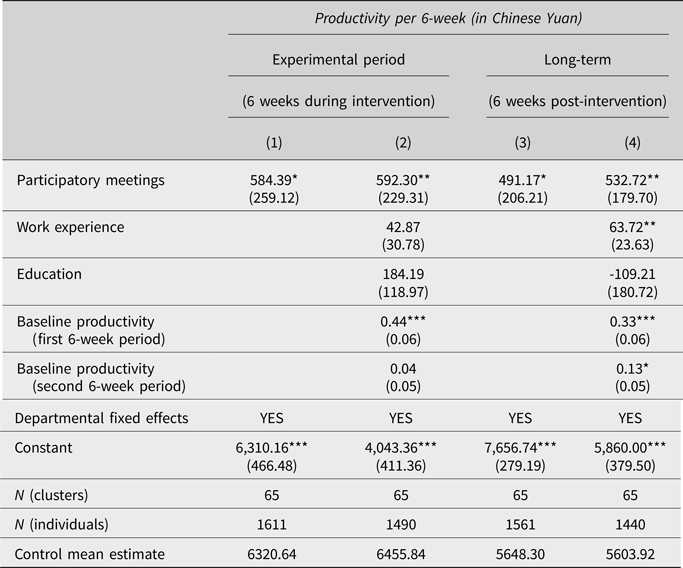Cambridge apologises for a publisher-introduced error during the production process of the above article (Wu and Paluck, Reference Wu and Paluck2022).
Table 1 was incorrectly typeset. The corrected Table 1 is reproduced below.
Table 1. Productivity Change During the Six-Week Experiment Period and Sustained Productivity Change After the Experiment.

Note: The comparison condition to the participatory meetings is the control-observer condition. Models include full-time sewing workers paid by piece-rates. Supervisors (N = 65) and staff members (N = 76) whose productivity cannot be determined by gross salary were excluded in the productivity data analysis. For workers who did not show up on any given day, their productivity was counted as zero for that day. See Table S8 for substantively and statistically consistent results using missing data imputation to account for those who did not provide demographic information or who left their positions. *p < 0.05; **p < 0.01; ***p < 0.001.



